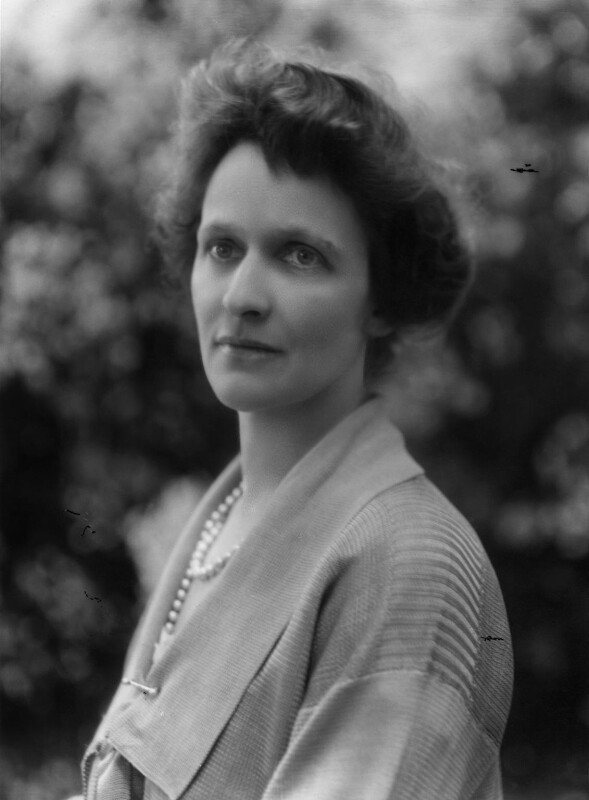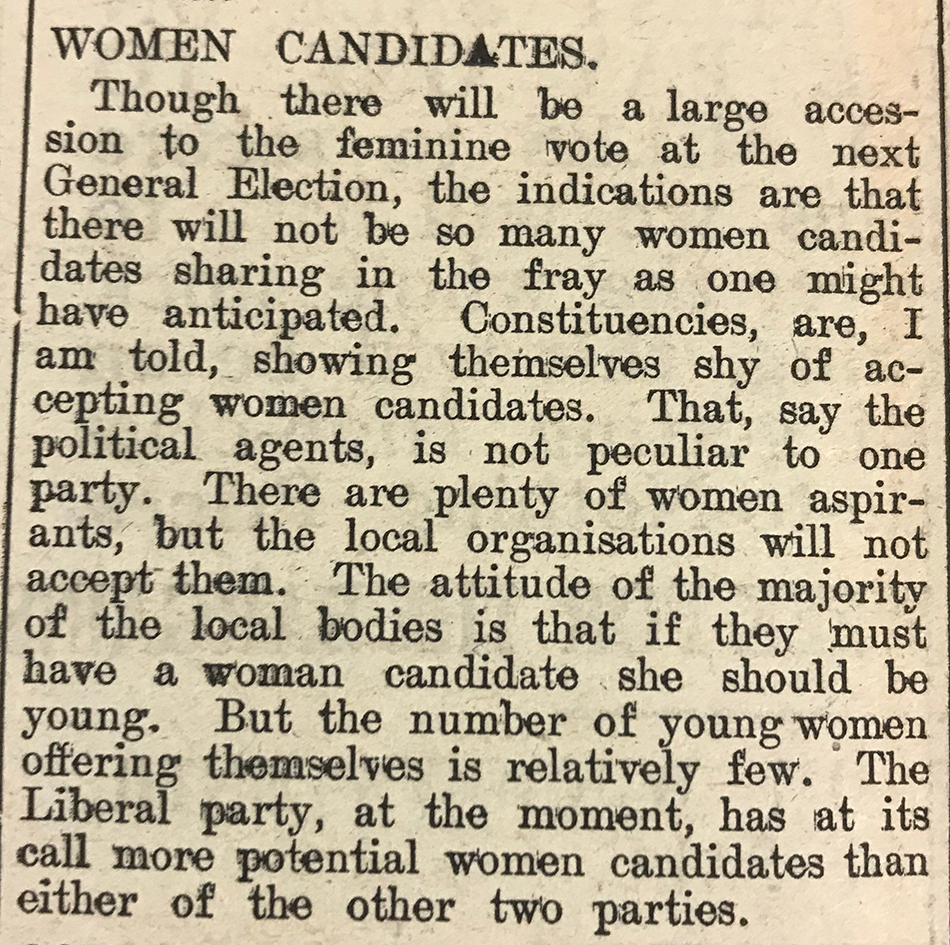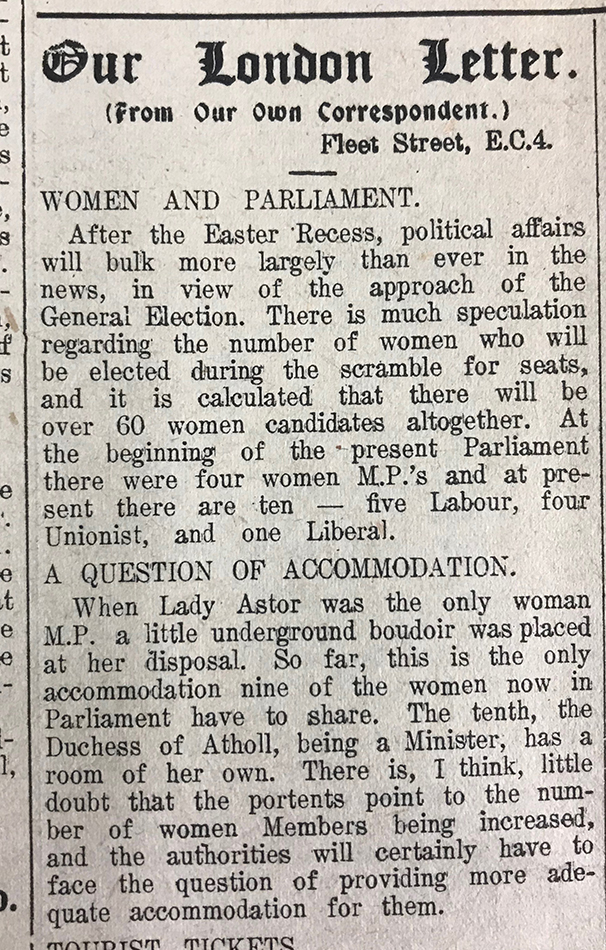Centenary of the Qualification of Women Act
Today is the 100th Anniversary of the Parliament (Qualification of Women) Act, November 1918 which allowed women to stand as Members of Parliament. For more on the struggle for equal representation why not have a look at our blog series on votes for women.

by Bassano Ltd, 18 June 1923 (NPG x18820 © National Portrait Gallery, London)
The first woman elected to the Commons was Constance Markievicz in 1918, although as a member of Sinn Fein she did not take her seat. The first woman to take her seat in the Commons was Viscountess Astor, serving for Plymouth Sutton in 1919.
Ten years after the Parliament Act and shortly after the Equal Franchise Act 1928 which extended the franchise to all women over 21, there were still very few female candidates standing for election. As reported by the London correspondent in the local Fife newspapers (19 January 1929), few women were being accepted by local organisations as the attitude of the majority of local parties was that a woman candidate ‘should be young’ and few young women were interested in standing.

As the General Election of 1929 approached, newspapers reported that there was speculation as to the number of women who would stand as candidates – estimates suggesting that there would be over 60 candidates. This was the first election since the Equal Franchise Act 1928 and at the time of the election there were only ten female members of Parliament, including Katherine Stewart-Murray Duchess of Atholl, the first woman MP for Scotland, serving the Kinross and West Perthshire constituency from 1923.

In the same article the London correspondent also highlighted the lack of accommodation for women MPs as Parliament had only a ‘little underground boudoir’ for women in 1929 – an issue that parliament would have to address given the likelihood that the number of women MPs would increase.
100 years on from the Parliament (Qualification of Women) Act and a total of 491 women have been elected as Members of the House of Commons (compared to 4,503 men).[1] In the last General Election (2017) the highest percentage of women MPs were elected – 208 MPs which is 32% of the total number of seats. Today there are a total of 209 female Members of Parliament.
In celebration of the centenary of the Qualification of Women Act, MPs of all parties have invited women from their constituencies to attend Parliament for #AskHerToStand Day.
[1] https://researchbriefings.parliament.uk/ResearchBriefing/Summary/SN06652